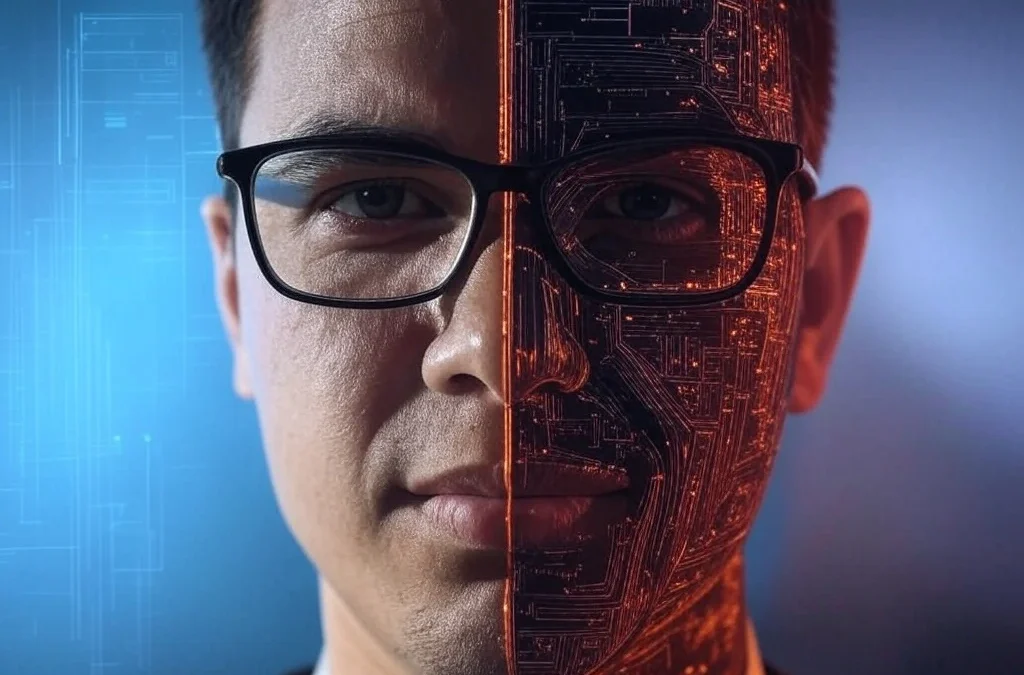Technology is a broad term that refers to the use of scientific knowledge, tools, machines, and systems to solve problems and improve human life. It includes everything from simple tools like hammers to advanced innovations like artificial intelligence and space exploration.
On the other hand, Information Technology (IT) is a specific branch of technology focused on using computers, networks, software, and digital systems to manage, process, and store information. IT plays a crucial role in businesses, communication, education, and various industries that rely on data handling and automation.
In simple terms, technology is a general concept covering all advancements and innovations, while information technology is a specialized field that deals with digital information and computing systems.
Examples of Technology vs. Information Technology
To help you understand the difference between Technology and Information Technology (IT) more clearly, here’s a comparison with practical examples:
Technology (General) |
Information Technology (IT) (Specific) |
|---|---|
| The invention of the wheel for transportation | Computer networks that connect devices for communication |
| Electricity used to power homes and industries | Cloud storage that stores and manages digital data |
| Automobiles improving transportation | GPS navigation systems that provide real-time directions |
| Medical devices like MRI scanners and pacemakers | Electronic health records (EHRs) used to store patient data securely |
| Construction equipment like cranes and bulldozers | Building Information Modeling (BIM) software used in construction planning |
| Home appliances like refrigerators and washing machines | Smart home systems that automate lighting, security, and temperature |
| Printing press revolutionizing mass communication | Digital publishing platforms used for online news and e-books |
| Farming tools such as plows and tractors | Agricultural software that analyzes weather and soil conditions |
More examples of Technology vs Information Technology
Technology (General Tools & Innovations) |
Information Technology (IT) (Computing & Digital Systems) |
|---|
| Bicycles – A simple but effective way to travel without fuel. | Ride-sharing apps – Apps like Uber or Lyft that connect drivers with passengers. |
| Traditional landline phones – Used for voice communication. | Smartphones – Devices that handle calls, internet, apps, and social media. |
| Handwritten letters – A personal way to send messages. | Emails – A faster, digital way to send written messages worldwide. |
| Paper maps – Used for navigation when traveling. | Google Maps – A GPS-powered app for real-time directions. |
| Cash registers – Used in stores to handle transactions manually. | Point of Sale (POS) systems – Digital payment processing with inventory tracking. |
| Traditional cameras – Used to take photos and develop film. | Cloud photo storage – Platforms like Google Photos for digital image saving. |
| CDs and DVDs – Physical discs for music, movies, and data storage. | Streaming services – Platforms like Netflix and Spotify for digital media. |
| Whiteboards in classrooms – Used for teaching and explaining concepts. | Online learning platforms – Websites like Coursera and Udemy offering digital education. |
| Mechanical locks – Used to secure homes and buildings. | Smart locks – Digital locks that can be controlled via smartphone. |
| Paper newspapers – Printed news distributed daily. | Online news websites – Websites like CNN and BBC providing real-time updates. |
Key Takeaway
- Technology includes all innovations and tools that improve human life.
- Information Technology (IT) specifically deals with computers, networks, and digital data management.
What is Technology?
Technology is the use of scientific knowledge, tools, machines, and systems to solve problems and improve human life. It includes everything from simple tools like hammers and wheels to advanced innovations such as artificial intelligence, robotics, and space exploration.
Technology is not limited to electronics—it covers a wide range of fields, including transportation, medicine, construction, agriculture, and energy. Every invention, from the printing press to the internet, has shaped the way people live, work, and communicate.
Key Aspects of Technology:
- Broad Scope – Covers all inventions, tools, and systems that improve efficiency.
- Not Just Digital – Includes mechanical, industrial, and engineering advancements.
- Problem-Solving – Created to make tasks easier, faster, or more effective.
- Ever-Evolving – Advances over time, from early human tools to modern smart devices.
Some common examples of technology include cars, airplanes, medical imaging devices, renewable energy systems, and smart home gadgets. Technology continues to shape industries, making life more convenient and efficient for individuals and businesses alike.
What is Information Technology?
Information Technology (IT) is the use of computers, software, networks, and digital systems to store, process, manage, and share information. IT plays a crucial role in businesses, education, healthcare, communication, and nearly every industry that relies on data and digital operations.
Unlike general technology, which includes all types of inventions and tools, Information Technology focuses specifically on computing and data management. It covers everything from computer hardware and software to cybersecurity, cloud computing, artificial intelligence, and IT support services.
Key Aspects of Information Technology:
- Digital Focus – IT deals with electronic data, computing devices, and software applications.
- Network & Communication – IT enables internet connectivity, cloud services, and digital communication.
- Business & Productivity – IT systems help companies manage operations, store information, and improve efficiency.
- Security & Data Protection – IT includes cybersecurity to protect digital information from threats.
Some common examples of Information Technology include databases, websites, mobile apps, IT support systems, enterprise software, and cloud-based services. IT is essential for modern businesses and daily life, enabling people to work, communicate, and access information more efficiently.
Career Paths and Opportunities
Choosing between a career in general technology or Information Technology (IT) usually comes down to your personal interests, skills, and long-term goals. Both areas offer many job opportunities, and knowing the differences can help you decide which is a better fit for you.
1. General Technology Careers
Careers in general technology often involve working with physical devices, equipment, or systems. Here are some common paths:
-
Engineering: Engineers design and build new products and structures, including cars, medical equipment, bridges, or electronics. For example, a mechanical engineer might design safer cars, while a civil engineer plans roads and bridges. Engineers typically work in offices, labs, or at construction sites.
-
Manufacturing: Technicians and specialists work hands-on to produce and assemble products, like medical devices, electronics, or even airplanes. People in manufacturing often appreciate seeing tangible results of their work each day.
-
Research & Development (R&D): Researchers explore and test new ideas and solutions. They might create more efficient solar panels or safer vehicles. If you enjoy innovation and discovering new ways to solve real-world problems, this area might suit you.
2. Information Technology (IT) Careers
Information Technology jobs focus specifically on computers, software, data, and digital systems. Common IT career paths include:
-
Software Development: Programmers create software and applications that run on computers or smartphones. This can range from websites and apps to complex software used in businesses or hospitals. If you like building digital tools that help people, software development is a rewarding choice.
-
Network Administration: Network administrators manage and maintain computer networks within organizations. Their job is to ensure that employees have reliable and secure access to information when they need it. This role suits people who enjoy keeping systems running smoothly and troubleshooting problems.
-
Cybersecurity: Cybersecurity professionals protect data and digital systems from hackers and other threats. As cyberattacks become more common, cybersecurity experts are in high demand. If you care about protecting people’s privacy and digital security, this can be a meaningful career.
-
Data Analysis: Data analysts collect, study, and interpret large sets of data to help businesses make better decisions. Analysts often enjoy finding patterns or trends that others might miss. Skills in tools like Excel, SQL, or data visualization software can be helpful here.
Skills and Education
Education and training can vary depending on the specific career you choose, but certain skills are valuable across all technology fields:
-
Formal Education: Degrees like a Bachelor’s in Engineering, Computer Science, Information Systems, or related fields can open many doors. These degrees give you a solid foundation and can increase your chances of landing interviews.
-
Certifications: Industry-recognized certifications such as CompTIA A+, Network+, Security+, or Cisco’s CCNA can help you stand out, especially in IT careers. Employers often value these because they prove your practical knowledge and skills.
-
Hands-on Experience: Getting hands-on experience through internships, personal projects, or entry-level positions can make a significant difference. From personal experience, having practical projects on your resume is often just as valuable as formal education.
-
Soft Skills: No matter the field, clear communication and teamwork are essential. Employers look for people who can clearly explain ideas, work effectively with others, and adapt when challenges arise.
Whether you prefer hands-on work with physical devices or solving digital problems behind a screen, understanding these career paths helps you choose the one that suits your interests and strengths best. Both technology and IT careers offer fulfilling work, growth opportunities, and a chance to contribute positively to people’s lives.
Read also: 30 Biotechnology Examples in Everyday Life
The Most Popular on BitGlint

30 Nature Worship Examples & Meaning
Nature has always mattered to people. Long before modern religions, people looked to the sky, the land, and the...

Top 30 Synergy Examples in Different Fields & Definition
Synergy represents one of the most powerful concepts across numerous fields - from business and science to...

30 Doubt Examples & Meaning
Everyone experiences doubt. It can show up in small everyday choices or big life decisions. Sometimes it’s a quiet...

40 Emotional Value Examples & Meaning
Why do some messages stick — while others are forgotten? Why do people choose one brand over another, even when the...

100 Temporary Things Examples & Meaning
What does it mean when something is temporary? We use the word often, but many people don’t stop to think about it. In...

100 Things That Are Short
Not everything in life is big or long-lasting. Some things are small. Some things pass quickly. People notice short...

100+ Things That Are Cold
Cold is something most people understand the moment they feel it. You step outside on a freezing morning. You grab a...
Get Inspired with BitGlint
The Latest
30 Examples of Gathering & What It Means
The word gathering shows up in everyday life more than we think. People gather at dinner tables, sports games, places of worship, and even in traffic. We gather items, thoughts, ideas, and people. It’s a word that covers both the ordinary and the meaningful. But what...

100 Non-Digital Things List
In everyday life, there are still hundreds of objects, tools, and materials that exist completely outside the digital world. These things don’t rely on apps, batteries, software, or code. They work the way they always have — by touch, by movement, by presence. Some...
100+ Legends Examples, Types, and Meanings
Legends have fascinated people for centuries. These traditional stories mix real history with imagination. From ancient warriors and lost cities to mysterious creatures, legends are found in every culture around the world. This article will take you through over 100...
100 Winged Things List
Wings have captured human imagination for centuries. From tiny insects to powerful birds, from mythical beasts to modern machines, wings allow movement, lift, and freedom. This list of 100 winged things covers the most fascinating examples found in nature, history,...

